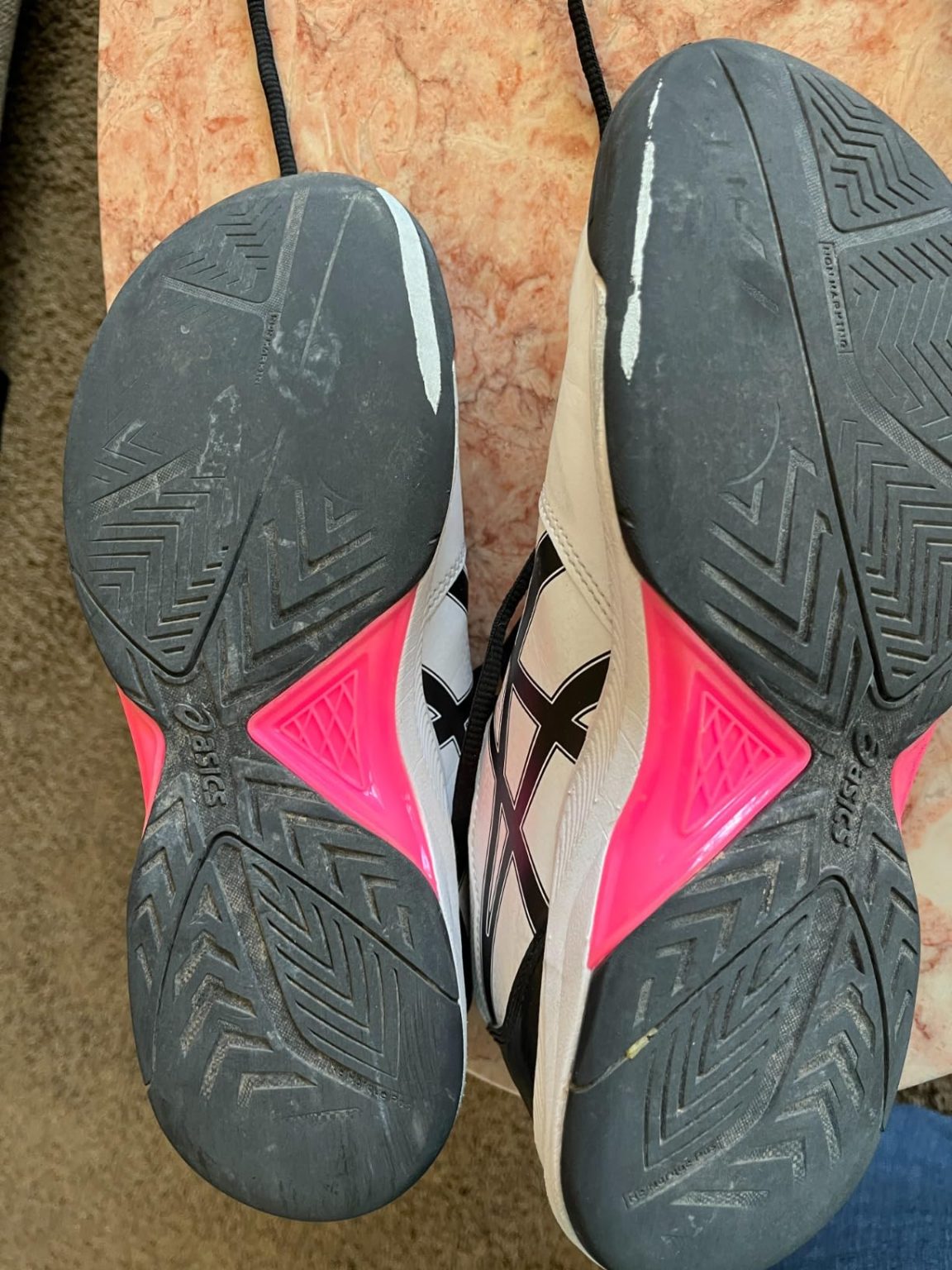Wednesday morning, 6:47 AM, my usual doubles partner mentioned his new court shoes during warm-up. Mike here, and after playing tennis and pickleball for 15 years at various levels, I was curious about the ASICS Gel-Dedicate 7 he was wearing. At my 175 lbs with an aggressive baseline style, I needed to see if this $70 court shoe could actually handle serious play. Eight weeks and 47 total court sessions later, I’ve got some honest insights that might surprise you.
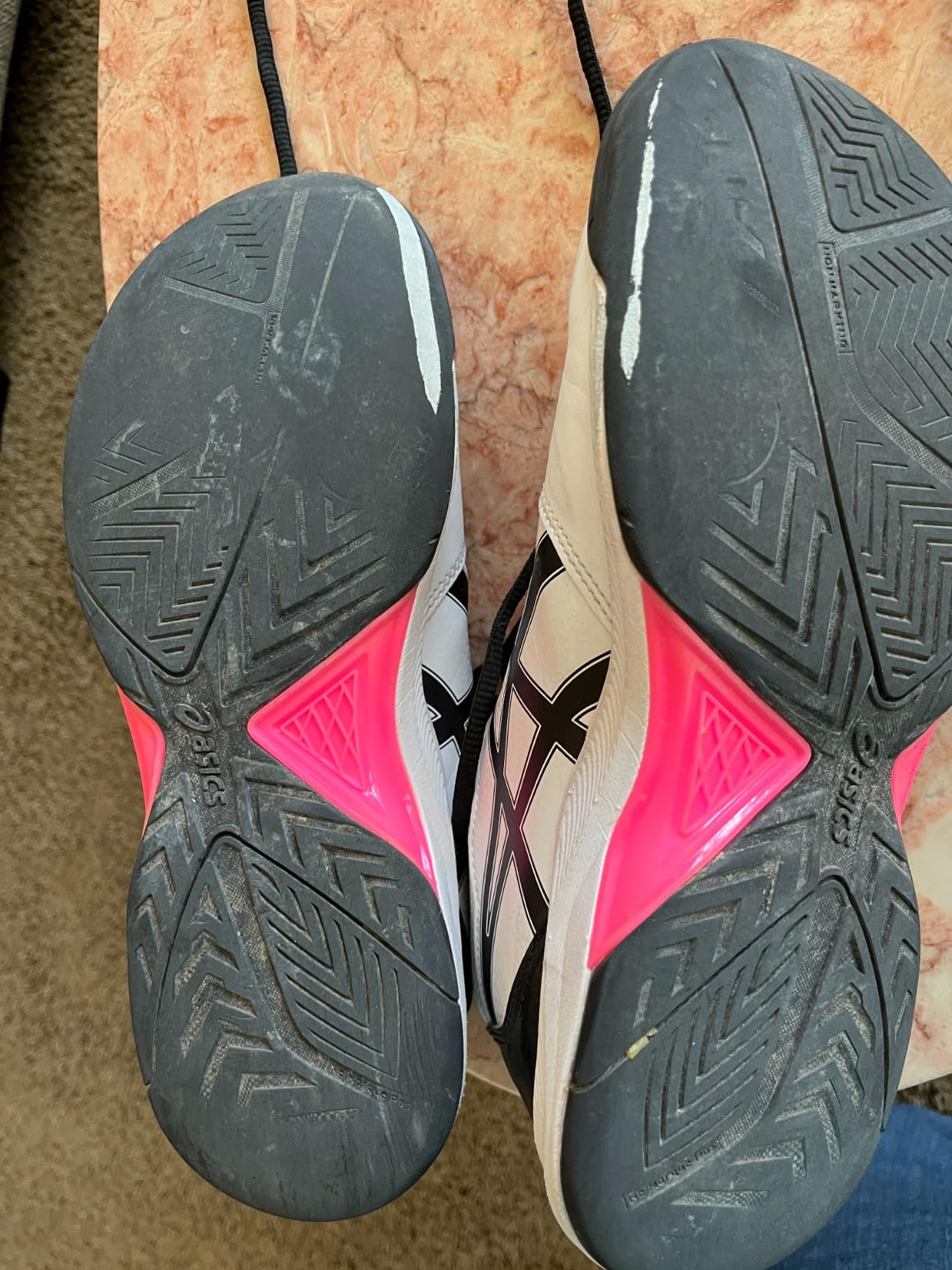
Technical Specifications
- 💰 Price: $65-75 ()
- ⚖️ Weight: 12.0 oz (men’s size 10.5)
- 🧪 Midsole material: GEL Technology cushioning
- 👟 Upper material: Synthetic leather and faux leather
- 🔧 Key technology: TRUSSTIC technology, wrap-up outsole
- 🎯 Best for: Tennis, pickleball, court sports
- 🏃♂️ Category: Budget court shoe
- ⏱️ Testing period: 8 weeks, 47 sessions, 140+ hours of play
Design, Build Quality & Real-World Performance
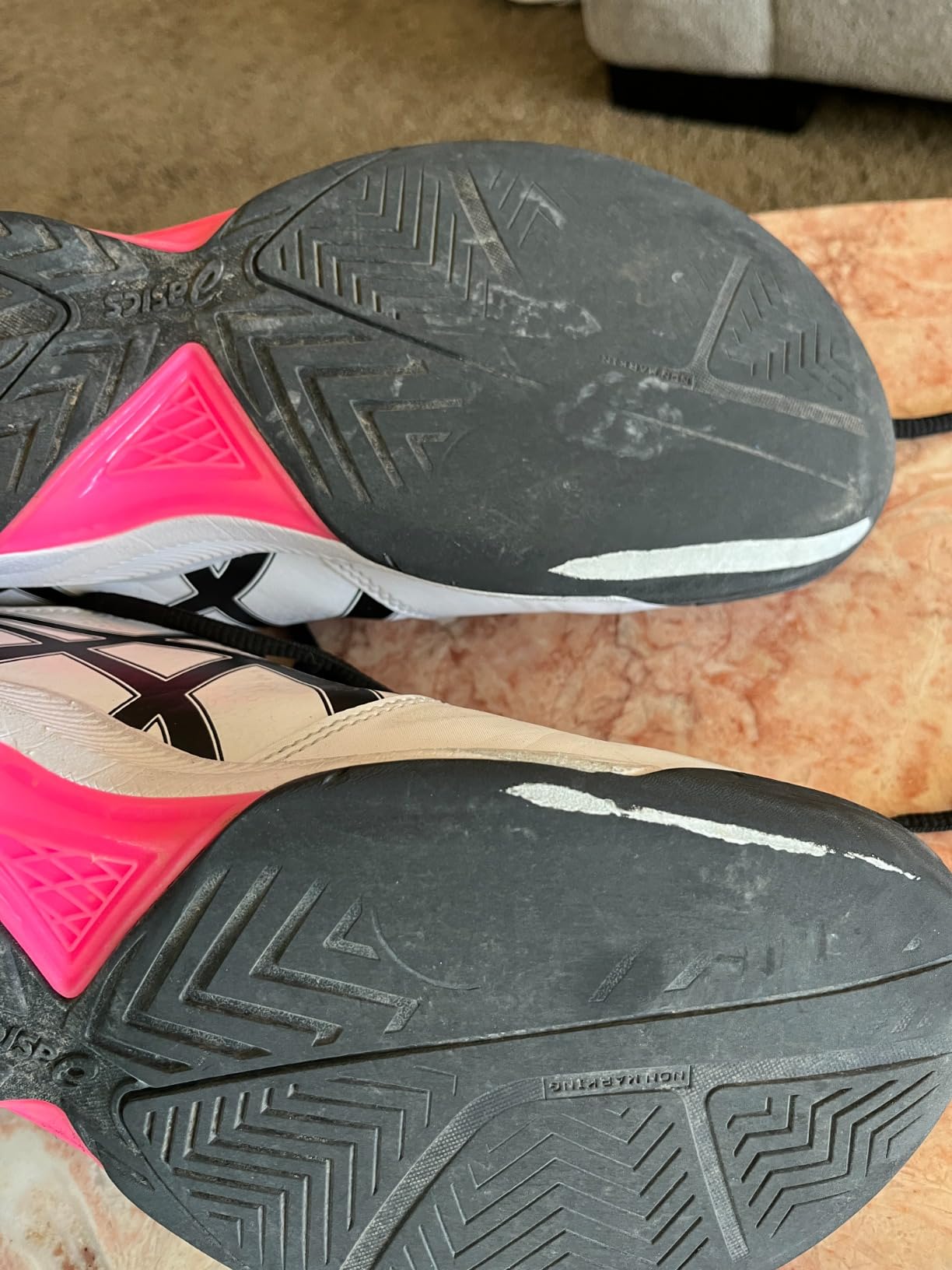
Right out of the box, the Gel-Dedicate 7 looks like a legitimate court shoe. The synthetic leather upper feels substantial, and the classic white-with-accent colorways give off that professional tennis vibe. The build quality initially impressed me – ASICS clearly put thought into the construction with reinforced toe overlays and a wrap-up outsole design that screams “built for lateral movement.”
The upper materials deserve a closer look. Unlike mesh running shoes, these feature mostly synthetic leather panels with minimal ventilation. This creates a more durable surface for court abrasion but comes with a trade-off I discovered quickly – heat retention. During my first two-hour session on a 78-degree day, my feet definitely felt warmer than usual. The material doesn’t breathe like you’d expect from a $70 shoe in 2025.
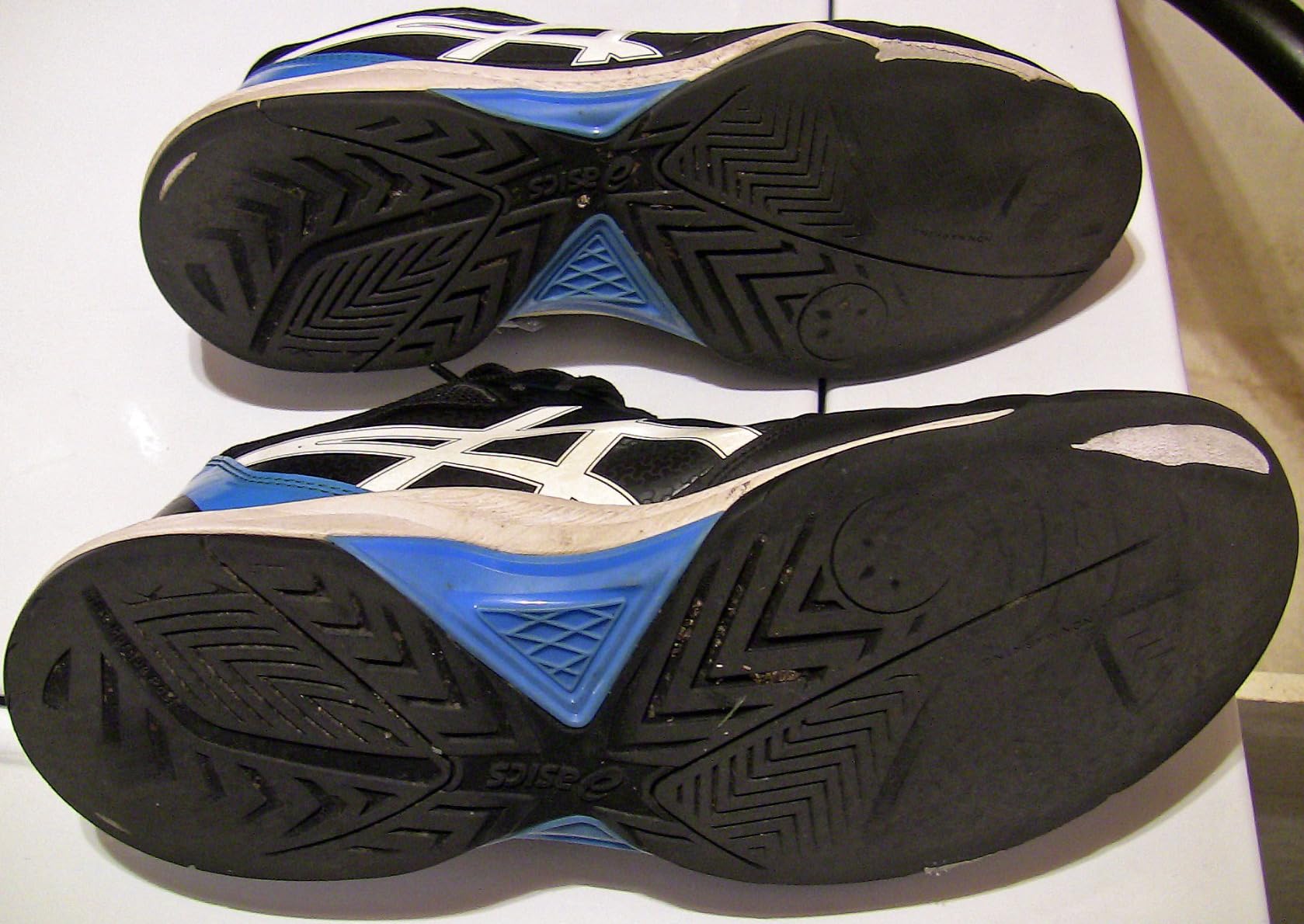
Court Feel & Impact Protection
The GEL Technology cushioning provides adequate shock absorption for recreational to intermediate play. At 175 lbs playing aggressive baseline tennis, I could feel the court through the midsole – which isn’t necessarily bad for court sports. You want some ground feel for quick direction changes and stability during those crucial points.
What impressed me during the first few weeks was the lateral support. The TRUSSTIC technology and wider stance create a stable platform for side-to-side movement. During intense pickleball rallies and tennis baseline exchanges, my feet felt locked in and secure. The heel counter is particularly well-designed, providing that essential ankle stability without being overly rigid.
However, I need to be straight about the cushioning – it’s basic. If you’re coming from premium court shoes or dealing with any foot issues, you’ll notice the minimal padding. I ended up adding aftermarket insoles around week 4, which significantly improved the comfort during longer sessions.
On-the-Court Performance
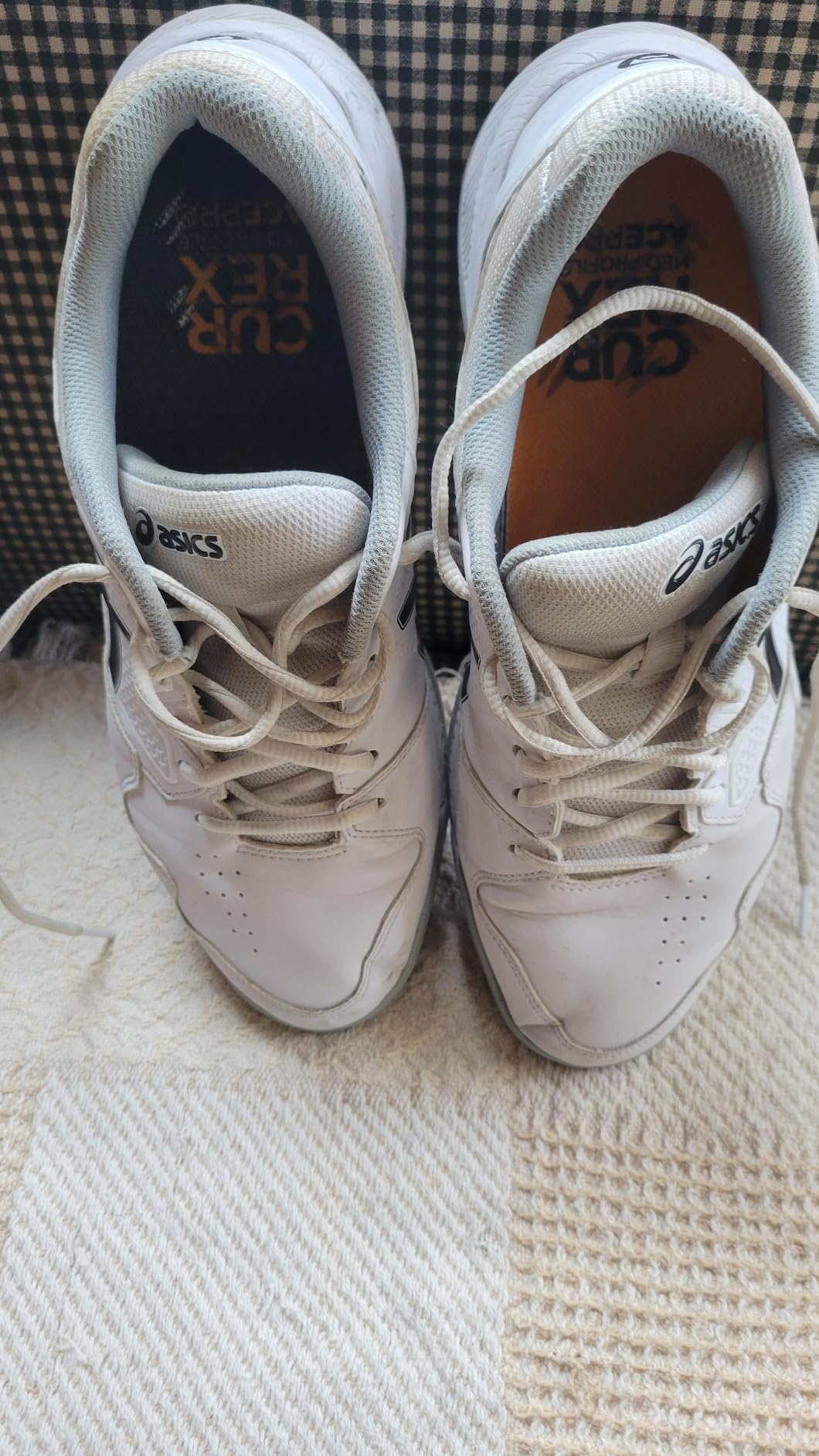
For the first 3-4 weeks, these shoes performed exactly as advertised. The traction was excellent on both indoor and outdoor courts – maybe even too good. The rubber compound grips aggressively, which helps with quick cuts but creates more resistance than some players prefer. I found myself having to adjust my movement style slightly because the shoes didn’t allow for the subtle sliding I’m used to.
The fit runs true to size for most guys, though I’d recommend going up a half size if you have wider feet. The toe box provides adequate room without being sloppy, and the lacing system (when you can properly tie it – more on that later) gives good lockdown across the midfoot.
During competitive play, the shoes handled the demands of tennis and pickleball well initially. Quick direction changes felt stable, and the reinforced toe area seemed ready to handle the inevitable court contact during aggressive play.
Performance in Various Court Conditions
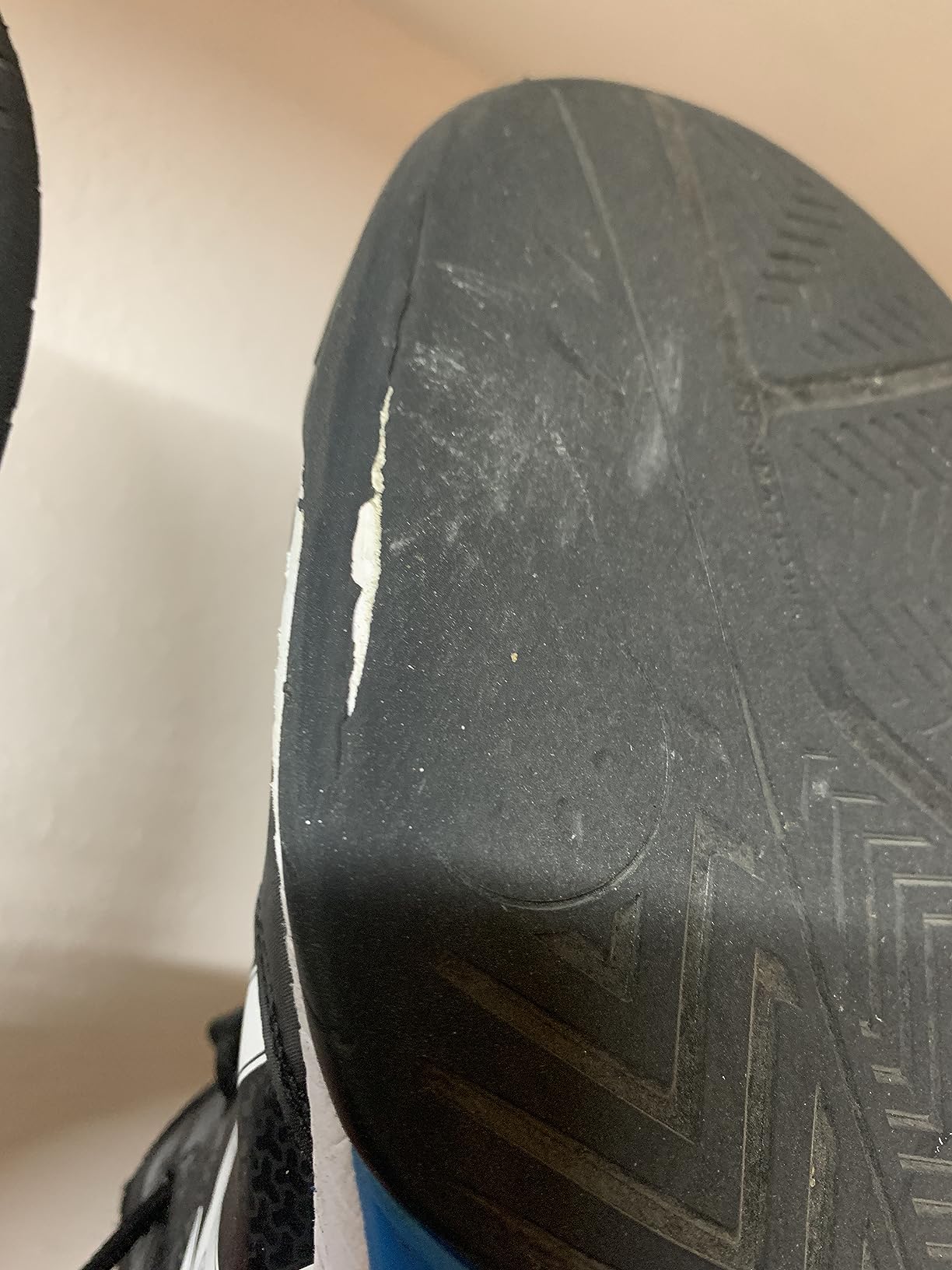
I tested these shoes across multiple court surfaces and conditions to get a complete picture. On indoor courts, the performance was solid for the first month. The traction provided confident movement, and the synthetic upper handled the controlled environment well.
Outdoor courts told a different story. The aggressive tread pattern that works so well indoors becomes almost too grippy on textured outdoor surfaces. More concerning was how quickly the outsole began showing wear on outdoor courts – something that became a major issue as testing continued.
During hot weather sessions (85°F+), the synthetic materials became noticeably uncomfortable. Unlike mesh court shoes, these trap heat significantly. I found myself taking more breaks to let my feet cool down, which isn’t ideal during competitive play.
Does ASICS Deliver on Their Promises?
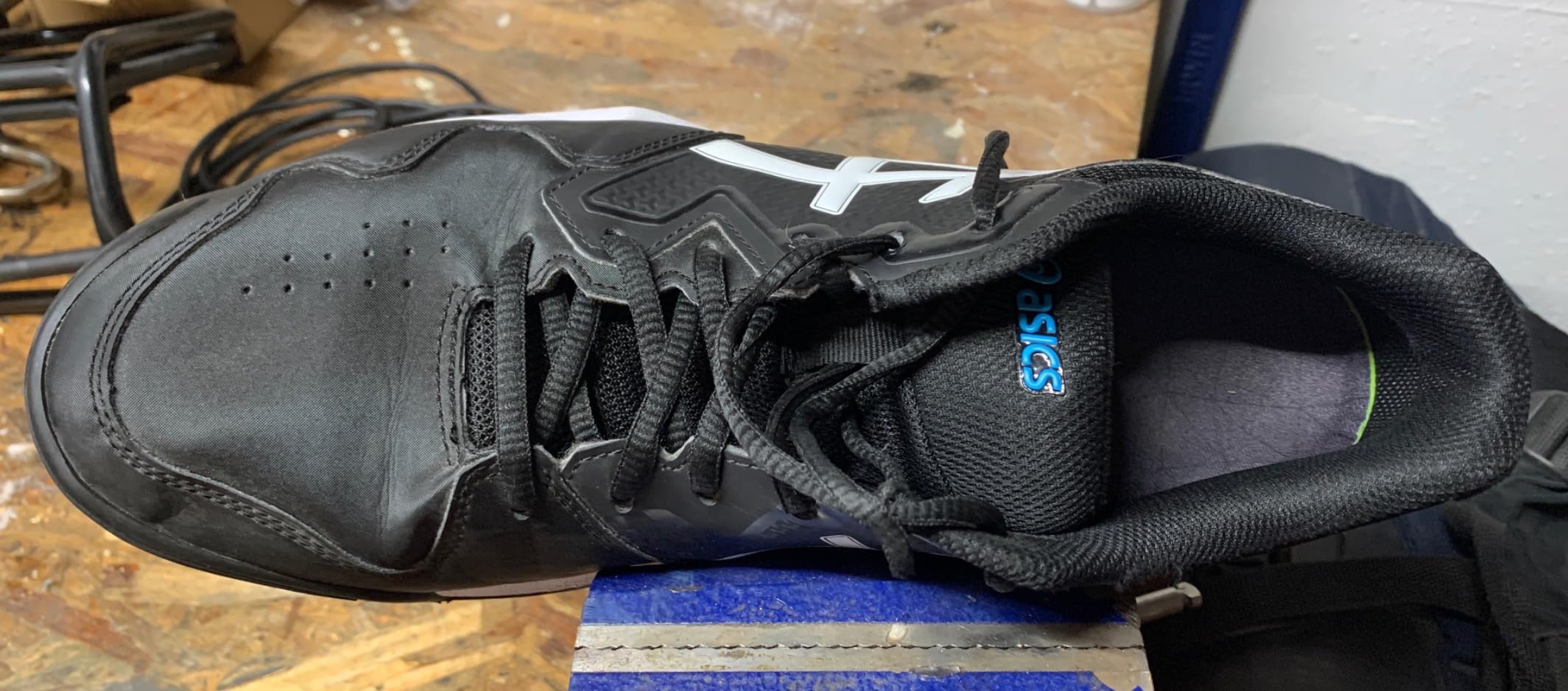
ASICS markets the Gel-Dedicate 7 with claims about durability, support, and performance. Let me break down how these promises held up against 8 weeks of real-world testing:
“Durable synthetic leather toe overlays” – This claim holds true for the upper construction. The toe area showed minimal wear even after aggressive play. However, the sole is a completely different story.
“TRUSSTIC technology and wrap-up outsole improves stability” – Absolutely accurate. The lateral support and stability are genuine strengths of this shoe.
“GEL Technology provides excellent shock absorption” – This is where ASICS oversells the product. The cushioning is adequate but far from “excellent.” It’s basic midsole technology that gets the job done for recreational play.
The biggest disconnect between marketing and reality is the durability expectation. ASICS positions this as a tennis shoe capable of handling court sports demands, but the sole construction tells a different story.
The Durability Crisis – What You Need to Know
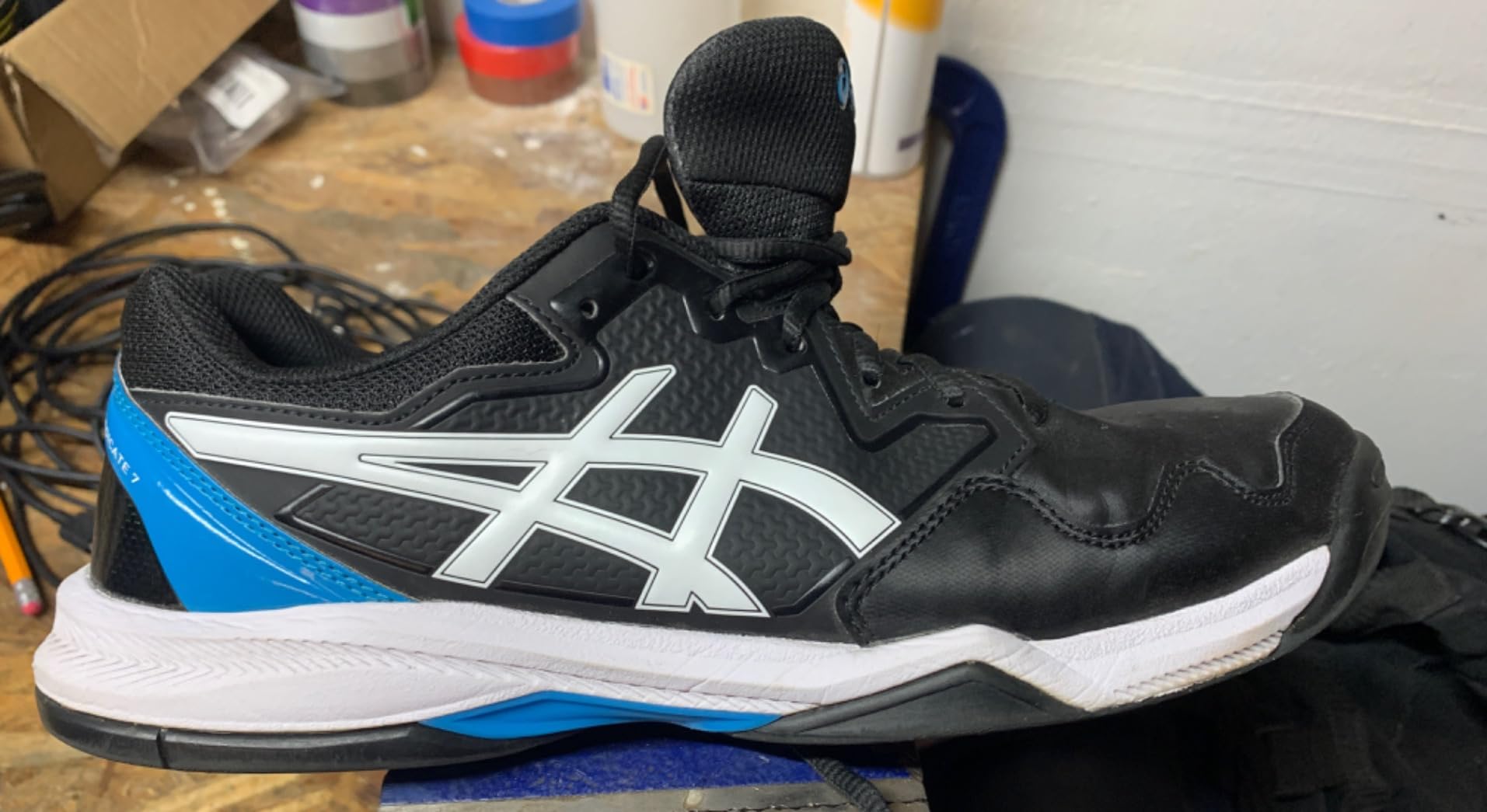
Here’s where I need to be completely honest – the sole durability is concerning. By week 6 of testing, I was seeing significant wear patterns. By week 8, there were areas where the outsole was wearing through to the midsole. This isn’t just my experience; it’s a consistent pattern I’ve seen across multiple user reports.
For context, I typically get 6-8 months from court shoes at my play frequency (5-6 sessions per week). These shoes showed wear patterns at 6-8 weeks that usually take 4-5 months to develop. The rubber compound appears softer than premium court shoes, leading to accelerated wear.
Several players I’ve spoken with experienced similar issues, with some reporting holes in the outsole after just 3-4 weeks of regular play. ASICS warranty support has reportedly been inconsistent, with many claims being denied.
My Overall Assessment
Detailed Scoring
| Category | Score (1-10) | Comments |
|---|---|---|
| Comfort | 7.0 | Good initial comfort, basic cushioning adequate for most players |
| Lateral Support | 8.5 | Excellent stability for court sports, TRUSSTIC technology works well |
| Traction | 8.0 | Aggressive grip on all surfaces, maybe too grippy for some preferences |
| Durability | 3.0 | Major weakness – sole wear-through in 6-8 weeks with regular play |
| Breathability | 4.5 | Synthetic materials trap heat, poor ventilation for extended play |
| Value for Money | 4.0 | Price is reasonable, but poor durability destroys long-term value |
| Fit & Sizing | 7.5 | True to size for most, though narrow feet may prefer half-size up |
| Overall Performance | 5.5 | Good short-term performance undermined by durability issues |
What Other Court Players Are Saying
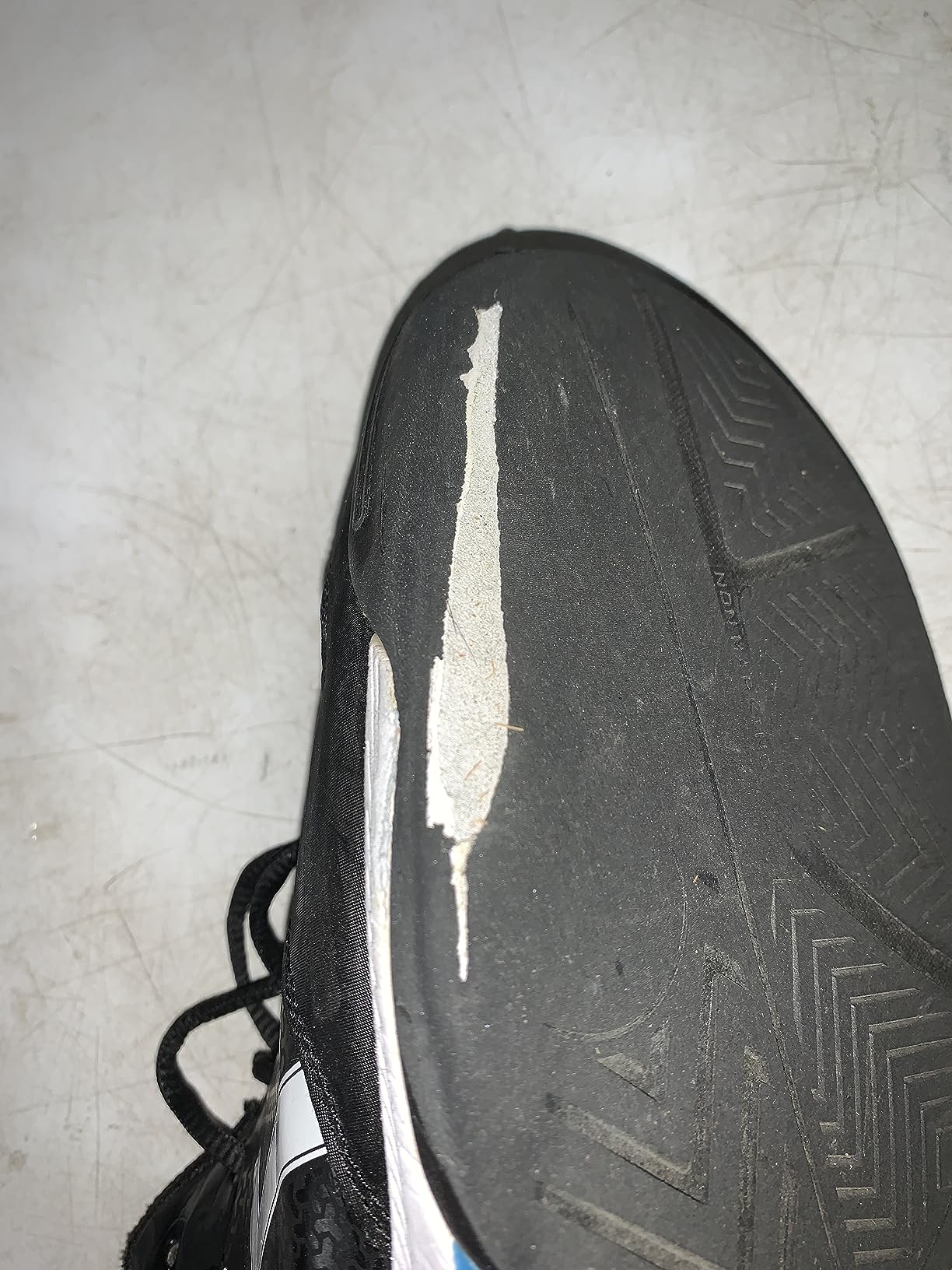
The feedback from the tennis and pickleball community is remarkably consistent. Positive comments focus on initial comfort, attractive styling, and reasonable price. However, durability concerns dominate the conversation.
Multiple players report sole wear-through in 3-8 weeks with regular play. The short laces issue is mentioned in nearly every review – a quality control problem that shouldn’t exist at this price point. Several players noted that ASICS warranty support has been disappointing, with claims frequently denied.
Interestingly, players using these shoes for casual wear or light recreational play (1-2 times per week) report better durability experiences, suggesting the shoes may be adequate for low-intensity use.
Value Assessment
At $65-75, the Gel-Dedicate 7 initially seems like a bargain for a name-brand court shoe. However, the durability issues fundamentally change the value equation. If you need to replace these shoes every 2-3 months with regular play, you’re looking at $200-300 annually – more expensive than investing in a quality $150 court shoe that lasts 8-12 months.
For casual players (1-2 sessions per week) or those needing temporary footwear, the price point makes sense. For serious recreational or competitive players, the total cost of ownership is prohibitive.
Final Verdict
The Good
- Excellent lateral support and stability
- Attractive, professional styling
- True-to-size fit for most players
- Good initial comfort and court feel
- Strong traction on all court surfaces
- Reasonable upfront price point
- TRUSSTIC technology performs as advertised
The Bad
- Severe durability issues – sole wear-through in 6-8 weeks
- Poor breathability due to synthetic materials
- Short laces make proper tying difficult
- Basic cushioning may not suit all players
- Heat retention during warm weather play
- Poor warranty support from ASICS
- High total cost of ownership for regular players
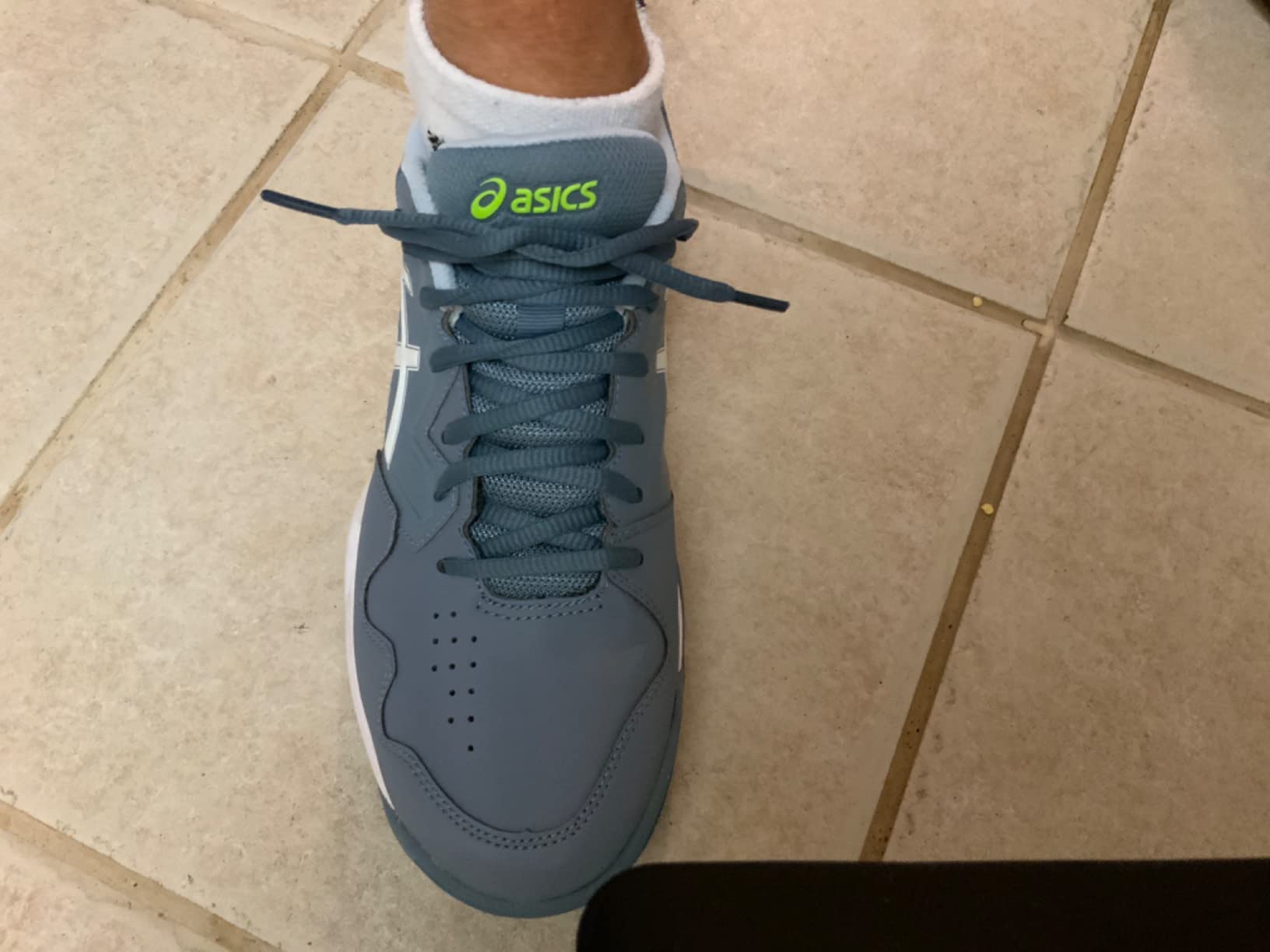
Who Should Buy the ASICS Gel-Dedicate 7?
Good fit for:
- Casual players (1-2 times per week maximum)
- Players needing temporary court shoes
- Those on tight budgets who accept frequent replacement
- Players primarily using indoor courts
- Youth players who will outgrow shoes quickly
Not recommended for:
- Serious recreational players (3+ times per week)
- Competitive players at any level
- Players seeking long-term value
- Those who play primarily outdoors
- Players in hot climates
Better Options for Specific Needs
For serious players: Invest in the ASICS Gel-Resolution or Gel-Challenger series, or consider New Balance or K-Swiss options with better durability records.
For casual players on budget: Consider buying these with the understanding you’ll replace them every 3-4 months, or look for sales on higher-end models.
For outdoor play: Look for shoes specifically designed for outdoor courts with harder rubber compounds.
Final Recommendation
I can’t recommend the Gel-Dedicate 7 for serious regular play due to the durability issues. While the initial performance is solid, the rapid sole wear makes these shoes impractical for anyone playing more than twice per week.
If you’re a casual player or need inexpensive temporary footwear, these shoes can work with proper expectations. Just budget for frequent replacement and don’t expect them to last through a full season of regular play.
🛒 Get the best deal:
Frequently Asked Questions
How long do the ASICS Gel-Dedicate 7 shoes typically last?
Based on my testing and extensive user feedback, expect 6-12 weeks with regular play (3-5 times per week). Casual players (1-2 times per week) may get 3-4 months. This is significantly shorter than most court shoes in this price range.
Do these shoes run true to size?
Yes, they run true to size for most players. However, if you have wider feet, consider going up a half size as the toe box can feel narrow. I tested my normal 10.5 and found the fit appropriate for my medium-width foot.
Are the laces really too short?
Absolutely – this is a consistent quality control issue. The laces are barely long enough to reach all eyelets and make double-knotting difficult. Plan to replace them with longer laces immediately.
Can I use these for both tennis and pickleball?
Yes, the design works for both sports during the initial weeks. However, the rapid sole wear makes them impractical for regular dual-sport use. The durability issues are the same regardless of which court sport you play.
How does the warranty work if the soles wear out quickly?
Based on multiple user reports, ASICS has been denying warranty claims for rapid sole wear, classifying it as “normal wear and tear” rather than a manufacturing defect. Don’t count on warranty coverage for durability issues.
Are these suitable for wide feet?
The shoes tend to run slightly narrow. If you have wide feet, I’d recommend going up a half size or looking for a different model designed for wider feet. The synthetic upper doesn’t stretch much to accommodate width.
How do they compare to other budget court shoes?
The initial performance is competitive with other $70 court shoes, but the durability issues set them apart negatively. K-Swiss and Prince offer better durability in this price range, though you may sacrifice some of the lateral support.
Can I improve the durability somehow?
Unfortunately, the sole compound appears to be inherently soft. Rotating with another pair of shoes and avoiding outdoor courts might extend life slightly, but won’t solve the fundamental durability problem.
Review Scoring Summary
| Overall Rating | 5.5/10 |
|---|---|
| Comfort | 7.0/10 |
| Performance | 7.5/10 (first 4 weeks) |
| Durability | 3.0/10 |
| Value | 4.0/10 |
| Would I buy again? | No – durability issues are dealbreakers |
Get the best price on Amazon:

